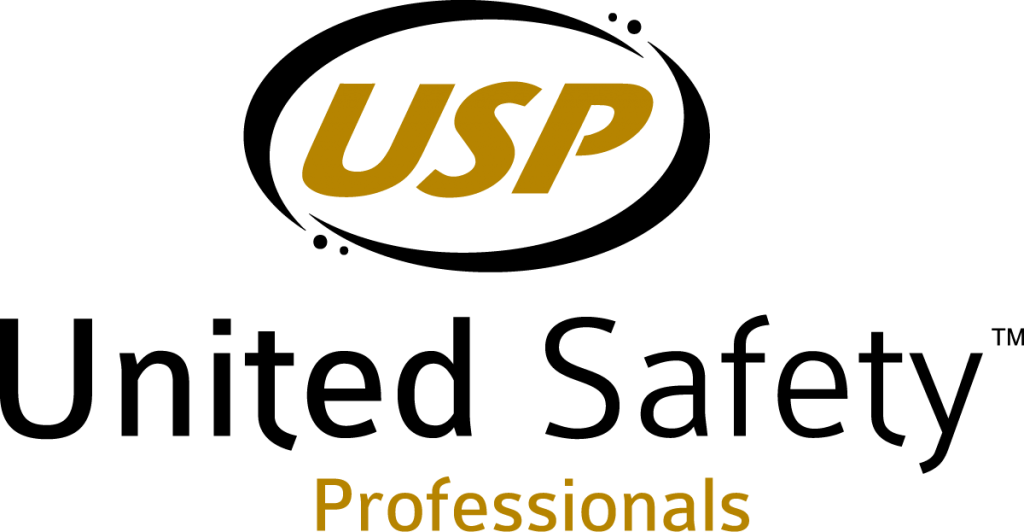COVID-19 Vaccination/Testing Mandate
Jump to:
OccuMed Occupational HealthWorks is committed to providing our customers and clients with timely and relevant information to keep you up-to-date with the federal COVID-19 vaccine/testing mandate, it’s requirements, and potential impacts to your business.
The evidence described in the ETS from OSHA points out examples of the impact that exposures from COVID-19, including those involving the Delta variant, have had on employees in general industry, agriculture, construction, maritime, and healthcare settings. It demonstrates that COVID-19 has spread to employees in these industries and, in many cases, infection was linked to exposure to infected persons at the worksite.
Vaccines are the preferred method of fighting the spread and effectiveness of the disease. They are extremely effective at preventing death and, despite the wider spread of the Delta Variant, still offer high protection against hospitalization. The risk of both of these outcomes however are still high for the unvaccinated.
OSHA finds that many employees in the U.S. who are not fully vaccinated against COVID-19 face a grave danger from exposure in the workplace. OSHA’s determination is based on the severe health consequences of exposure to the virus, including death; powerful lines of evidence demonstrating the transmissibility of the virus in the workplace; and the prevalence of infections in employee populations.
On-site workplace inspections will be conducted by OSHA to make sure companies comply with the rules, and penalties for noncompliance can range from $13,653 for a serious violation to $136,532 for willfully violations.
OSHA estimates approximately 84.2 million employees are covered by the ETS and are not excluded from coverage by working remotely 100 percent of the time or exclusively outside.
OSHA estimates that the 84.2m covered employees includes 52.5 million (62 percent) vaccinated employees and 31.7 million unvaccinated employees (38 percent).
SCOPE OF THE COVID-19 ETS
The ETS applies to all employers with a total of 100 or more employees for the duration the ETS is in effect.
This does not apply to those who:
- Do not report to a workplace where other individuals, such as coworkers or customers, are present;
- Work exclusively from home;
- Or work exclusively outdoors (this chart from OSHA lists the occupations expected to be exempt based on outdoor work)
Employers must include all employees across all of their U.S. locations, regardless of employees’ vaccination status or where they perform their work. Part-time employees count towards the company total, but independent contractors do not.
On a worksite such as a construction site, each company represented—the host employer, the general contractor, and each subcontractor—would only need to count its own employees, and the host employer and general contractor would not need to count the total number of workers at each site. For example, if a general contractor has more than 100 employees spread out over multiple construction sites, that employer is covered under this ETS even if it does not have 100 or more employees present at any one worksite.
In a traditional franchisor-franchisee relationship in which each franchise location is independently owned and operated, the franchisor and franchisees would be separate entities for coverage purposes, such that the franchisor would only count “corporate” employees, and each franchisee would only count employees of that individual franchise.
Additional examples (more are available on the federalregister.gov website):
- If an employer has 75 part-time employees and 25 full-time employees, the employer would be within the scope of this ETS because it has 100 employees.
- If an employer has 150 employees, 100 of whom work from their homes full-time and 50 of whom work in the office at least part of the time, the employer would be within the scope of this ETS because it has more than 100 employees.
- If an employer has 102 employees and only 3 ever report to an office location, that employer would be covered.
OSHA estimates that all employers in all private sector industries are affected by this ETS to some extent. Although this ETS imposes no compliance burden on employers whose employees work remotely 100 percent of the time, in OSHA’s analysis, no employers with 100 or more employees have all of their employees working remotely 100 percent of the time ( i.e. , at least some employees in each affected firm do not work remotely).
REQUIREMENTS
DETERMINING EMPLOYEE VACCINATION STATUS
Under § 1910.501(e):
Paragraph (e)(1). The employer must determine the vaccination status of each employee. This determination must include whether the employee is fully vaccinated, which is 2 weeks after the full required vaccine course is completed.
Paragraph (e)(2). The employer must require each vaccinated employee to provide acceptable proof of vaccination status, including whether they are fully or partially vaccinated. Acceptable proof of vaccination status is:
- The record of immunization from a health care provider or pharmacy;
- A copy of the COVID-19 Vaccination Record Card;
- A copy of medical records documenting the vaccination;
Additional Requirements on federalregister.gov website.
EMPLOYER SUPPORT FOR EMPLOYEE VACCINATION
Under 29 CFR 1910.501(f):
The employer must support COVID-19 vaccination by providing:
Time for vaccination. The employer must: (i) Provide a reasonable amount of time to each employee for each of their primary vaccination series dose(s); and (ii) provide up to 4 hours paid time, including travel time, at the employee’s regular rate of pay for this purpose.
- Time for recovery. The employer must provide reasonable time and paid sick leave to recover from side effects experienced following any primary vaccination series dose to each employee for each dose.
COVID-19 TESTING FOR EMPLOYEES WHO ARE NOT FULLY VACCINATED
Section 1910.501(g)(1) of the ETS requires the employer to ensure that each employee who is not fully vaccinated do the following:
An employee who reports at least once every 7 days to a workplace where other individuals, such as coworkers or customers, are present:
- Must be tested for COVID-19 at least once every 7 days; and
- Must provide documentation of the most recent COVID-19 test result to the employer no later than the 7th day following the date on which the employee last provided a test result.
An employee who does not report during a period of 7 or more days to a workplace where other individuals, such as coworkers or customers, are present ( e.g., teleworking for two weeks prior to reporting to a workplace with others):
- Must be tested for COVID-19 within 7 days prior to returning to the workplace; and
- Must provide documentation of that test result to the employer upon return to the workplace.
Furthermore, if an employee does not provide documentation of a COVID-19 test result, the employer must keep that employee removed from the workplace until they provide a test result. In addition, when an employee has received a positive COVID-19 test, or has been diagnosed with COVID-19 by a licensed healthcare provider, the employer must not require that employee to undergo COVID-19 testing as for 90 days following the date of their positive test or diagnosis. Finally, the employer must maintain a record of each test result provided by each employee or obtained during tests conducted by the employer.
Employees who are partially vaccinated are also required to be tested weekly until they are fully vaccinated.
The ETS does not require the employer to pay for any costs associated with testing or face coverings; however employer payment for testing may be required by other laws, regulations, or collective bargaining agreements.
EMPLOYEE NOTIFICATION TO EMPLOYER OF A POSITIVE COVID-19 TEST AND REMOVAL
Under § 1910.501(h):
Regardless of COVID-19 vaccination status or any COVID-19 testing required under paragraph (g) of the ETS, the employer must:
- Require each employee to promptly notify the employer when they receive a positive COVID-19 test or are diagnosed with COVID-19 by a licensed healthcare provider; and
- Immediately remove from the workplace any employee who receives a positive COVID-19 test or is diagnosed with COVID-19 by a licensed healthcare provider and keep the employee removed until the employee:
- (i) Receives a negative result on a COVID-19 nucleic acid amplification test (NAAT) following a positive result on a COVID-19 antigen test if the employee chooses to seek a NAAT test for confirmatory testing;
- (ii) meets the return to work criteria in CDC’s “Isolation Guidance”; or
- (iii) receives a recommendation to return to work from a licensed healthcare provider.
Testing to Increase Dramatically
Despite OSHA expecting that only 14% of the covered workers under the ETS are ‘Vaccine-Hesitant’ (the percentage of workers who “probably or definitely will not” get the vaccine), the requirement for testing will cause an increase of PCR and antigen tests needed for weekly reporting by employees and employers.
This increase will not only cause test availability to potentially be limited, but could also find results be delayed due to the surge.
Avoid long lead times for testing services and results by scheduling your service well in advance of the mandate going into effect.
Recordkeeping will be important
The employer must maintain a record of each employee’s vaccination status and must preserve acceptable proof of vaccination for each employee who is fully or partially vaccinated.
These records and roster are considered to be employee medical records and must be maintained as such and must not be disclosed except as required or authorized by the ETS or other federal law. Some companies that just reach the threshold for the mandate may not have experienced staff to handle the recording/documentation/storage of these records. Companies need to be prepared to have these records available when needed to avoid potential fines.
Workforce Changes May be Inevitable
OSHA notes that even mild cases of COVID-19 can be costly to employers as they can see productivity losses due to work absences, both among those infected and their close contacts who may be subject to quarantine requirements. Absenteeism can also affect the productivity of workers who are present, similar to how turnover can impose costs on incumbent workers who are making up the additional work from those who are not available.
This ETS is designed to reduce absenteeism because, when an infected employee is promptly removed from the workplace, that can prevent one employee from infecting other employees in the workplace and potentially causing an outbreak or a super-spreader event.
OccuMed has been at the forefront of testing and organizational preparedness throughout the entire pandemic. Our services have been leveraged by
- Private Schools;
- Construction Sites;
- Film Sets;
- Health Care Facilities;
- Municipalities, and more.
You can trust that our experience and relationship with industry partners wil provide you and your staff with reliable, efficient and timely testing and results.
Stay ahead and be prepared for the mandate that goes into effect on January 10, 2022 by partnering with us to conduct your testing, assist with recordkeeping (training and implementation), and train your staff on health and wellness procedures to further minimize or eliminate the risk of COVID-19.
Contact Us Today


